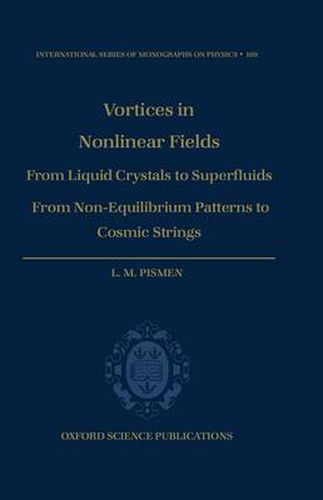Readings Newsletter
Become a Readings Member to make your shopping experience even easier.
Sign in or sign up for free!
You’re not far away from qualifying for FREE standard shipping within Australia
You’ve qualified for FREE standard shipping within Australia
The cart is loading…






Although natural phenomena can be described by a few simple and symmetric basic laws they exhibit an astounding variety of behaviours. This can be explained by a process known as symmetry breaking, which can cause an ordered state to form with topological defects. The dynamics of further evolution are determined to a large extent by the dynamics of such defects. This book covers the structure and dynamics of vortices in a variety of non-linear field models with spontaneously broken symmetry. Point vortices or vortex lines can correspond, depending on the physical setting, to quantized vortices in superfluids or superconductors, dislocations in non- equilibrium patterns, rotating spiral waves, disclinations in liquid crystals, singularities in optical fields or strings in relativistic field theories. This book is unique in considering vortices in these different settings, but also emphasizes the analytical methods that allow an understanding of the common theoretical structure underlying defect dynamics.
$9.00 standard shipping within Australia
FREE standard shipping within Australia for orders over $100.00
Express & International shipping calculated at checkout
Stock availability can be subject to change without notice. We recommend calling the shop or contacting our online team to check availability of low stock items. Please see our Shopping Online page for more details.
Although natural phenomena can be described by a few simple and symmetric basic laws they exhibit an astounding variety of behaviours. This can be explained by a process known as symmetry breaking, which can cause an ordered state to form with topological defects. The dynamics of further evolution are determined to a large extent by the dynamics of such defects. This book covers the structure and dynamics of vortices in a variety of non-linear field models with spontaneously broken symmetry. Point vortices or vortex lines can correspond, depending on the physical setting, to quantized vortices in superfluids or superconductors, dislocations in non- equilibrium patterns, rotating spiral waves, disclinations in liquid crystals, singularities in optical fields or strings in relativistic field theories. This book is unique in considering vortices in these different settings, but also emphasizes the analytical methods that allow an understanding of the common theoretical structure underlying defect dynamics.